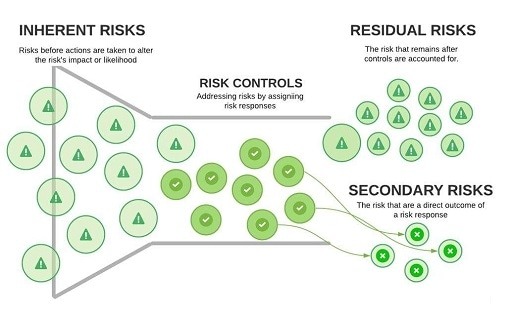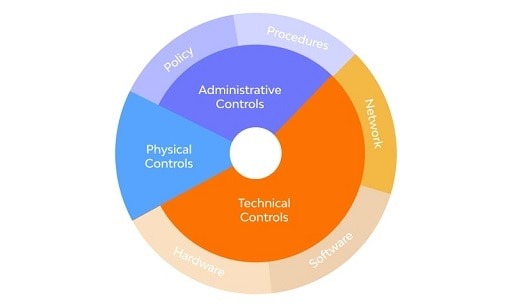Hackers pose a significant risk not only to companies but also to individuals. They are meant to be prevented from entering secure areas through authentication, although in practice, this is not always successful.
Cybercriminals have a wide variety of tools at their disposal that they might use to mimic law-abiding individuals. Because of this, they are able to access confidential information even when they are not authorized to do so. After that, it can be put to use or sold.
Hackers are frequently able to access secure locations because of weaknesses in the authentication process that they exploit. The question now is, what exactly are these holes in security, and how can they be patched?

What are Broken Authentication Vulnerabilities?
A vulnerability that allows an attacker to impersonate a valid user is known as a broken authentication vulnerability.
In most cases, a valid user will authenticate themselves by using either a password or a session ID. Something on the user’s computer known as a session ID indicates that the user has successfully signed in at some point in the past.
When you are surfing the internet, if you aren’t prompted to check in to one of your accounts, it is because the provider of that account has located your session ID.
The majority of authentication flaws are caused by errors in the way session IDs or passwords are managed. In order to prevent assaults, you need to examine how a hacker may use one of these objects, and then you need to adapt the system in such a way that it makes it as difficult for them to do so as is humanly possible.
How do you get your hands on a session ID?
Obtaining session IDs can be done in a variety of different ways, depending on the architecture of the system in question. After the session ID has been validated, the hacker will have access to every portion of the system that is normally reserved for authorized users.
Session Hijacking
The act of taking a session ID is what’s known as “session hijacking.” One of the most common reasons for this is that the user made a mistake, which made it possible for someone else to access the user’s session ID.
The information that is sent to and from the user’s computer will not be encrypted if the user is connected to an insecure Wi-Fi network. If this happens, a hacker could be able to steal the session ID while it is being transmitted from the system to the user.
When a user logs into a public computer without remembering to log out, this is a lot simpler scenario to handle. The session ID would stay on the computer in this circumstance, making it accessible to anyone who uses the device.
Rewriting the Session ID URL
There are some applications that are built in such a way that the session ID is saved in the URL. After successfully authenticating themselves within such a system, users are taken to a specific website. After that, the user is able to regain access to the system by going to the initial page.
This presents a dilemma since anyone who obtains access to the exact URL of a user has the ability to impersonate that user. This could happen if the user is connected to an insecure WiFi network or if they give their one-of-a-kind URL to another person. URLs are frequently exchanged on the internet, and it’s not unusual for users to accidentally reveal their session IDs as well.
How do people get their hands on passwords?
It is possible, with or without the assistance of the user, to guess or steal passwords using a variety of different methods. Hackers are able to try to crack thousands of passwords in a single operation since many of these techniques may be automated.
Attempts to appear more qualified
Credential stuffing refers to the practice of attempting to get access to a large number of private accounts by using previously stolen passwords. Passwords that have been stolen are easily accessible online. When a website is hacked, the details of its users may be taken, and the hacker will frequently resell these details.
The act of obtaining this user data and then testing them out on a large number of websites in bulk is what is known as “credential stuffing.” Because passwords are frequently reused, it is common practice to use the same login and password combination to log in to a number of different accounts.
Spreading Passwords Around
The practice of trying out numerous weak passwords in rapid succession is known as “password spraying.” After a certain number of unsuccessful login attempts, many computer systems are set up to prevent users from accessing the system.
The technique known as “password spraying” is designed to get around this limitation by testing weak passwords on hundreds of accounts rather than attempting to break into a single user’s account. This enables the attacker to attempt a large number of passwords without raising any red flags with the system.
Phishing
Phishing emails are emails that have the appearance of being legitimate but are in fact aimed to steal people’s passwords and other confidential information.
Phishing emails are also known as spear phishing emails. Phishing emails typically invite the recipient to visit a website and sign in using credentials for an account that they already possess. However, the website that has been provided is malicious, and any information that is input will immediately be stolen.
How to make the most of your session management
The potential for a hacker to impersonate a user using session IDs depends on how a system is designed.
Avoid keeping session IDs in URLs if possible.
In no circumstance should session IDs ever be saved in the URL. Cookies are an excellent choice for session identifiers because they are significantly more challenging for an attacker to access.
Switch up the session IDs
It is best practice to routinely replace session IDs, even if doing so does not require the user to log out. This functions as an alternative to automatic logouts and prevents a scenario where an attacker can use a stolen session ID for as long as the user does.
Enable Automatic Logouts
After a predetermined amount of time during which they have not accessed their accounts, users ought to be forced to log out. After the change is made, a lost or stolen session ID will no longer be usable.
How to Enhance Password Policies
All private places should require strong passwords and users should be required to provide extra authentication.
Apply Password Rules
Any system that permits the use of passwords ought to define the parameters for those passwords and make those rules public. It should be mandatory for users to come up with a password that is a certain minimum length and contains a variety of characters.
Make Two-Factor Authentication (2FA) a mandatory
Passwords are readily stolen and the only approach to prevent hackers from utilizing them is to establish two-factor authentication. A user is required to supply not just their password but also another piece of information that is often only saved on their device in order to complete this process.
Once deployed, a hacker won’t be able to access the account, even if they know the password.
Broken Authentication Vulnerabilities are a serious threat that must be avoided
Broken authentication vulnerabilities are a severe problem for any system that saves private information. These flaws might allow unauthorized access to the system. They make it possible for hackers to assume the identities of genuine users and gain access to any location that is accessible to them.
In most cases, the term “broken authentication” relates to difficulties with the way that sessions are managed or with the way that passwords are utilized. It is feasible to make it extremely difficult for hackers to gain access to a system by first gaining an understanding of how they might try to do so.
It is important for systems to be constructed in such a way that session IDs are not easily accessible and do not remain active for any longer than is required. It is also important to avoid relying solely on a user’s password as the only method of user authentication.
Would you like to read more about Broken Authentication Vulnerabilities-related articles? If so, we invite you to take a look at our other tech topics before you leave!










